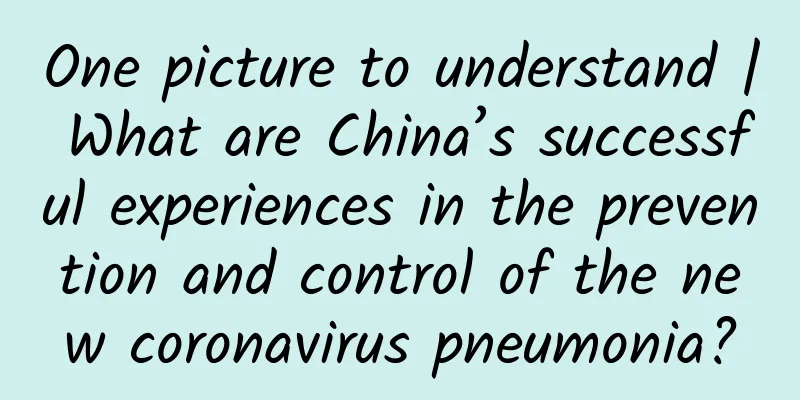What does your heart say when you faint?

|
Author: Zhang Jianjun, Chief Physician, Beijing Chaoyang Hospital, Capital Medical University Reviewer: Zhang Haicheng, Chief Physician, Peking University People's Hospital In daily life, people may encounter or hear about someone around them suddenly fainting. This sudden loss of consciousness, although sometimes only lasts for a few seconds to a few minutes, is enough to cause people to panic and anxiety. Syncope is a common sudden symptom that not only affects the patient's physical health, but may also cause psychological distress. Understanding the causes of syncope, how to distinguish syncope from other similar symptoms such as coma and shock, and taking correct first aid measures in a timely manner are important for protecting yourself and others. Figure 1 Original copyright image, no permission to reprint Heart disease is a broad concept that covers a variety of diseases, including hypertension, coronary heart disease, heart failure, valvular disease, myocarditis, cardiomyopathy, etc. These diseases may affect the heart's pumping function, leading to a series of clinical symptoms. When the heart is not supplied with enough blood, acute events such as angina pectoris and myocardial infarction may occur; while decreased heart function or structural changes may lead to chronic problems such as heart failure and valvular disease. Syncope is a non-specific manifestation of heart disease, and complex cardiovascular mechanisms may be hidden behind it. For example, vasovagal syncope is a common type of syncope, which often occurs in individuals with tall and thin body shapes, lack of exercise, and unstable neurological types. In noisy or hot environments, these people are prone to transient loss of consciousness and inability to maintain body position due to imbalance in neural regulation. Although vasovagal syncope itself is not directly life-threatening, it may be an early sign of other potential heart diseases. In addition to vasovagal syncope, heart diseases such as arrhythmia, valvular heart disease, and heart failure may also cause syncope. When arrhythmia occurs, the heart beats too fast or too slow, which may affect the heart's pumping function, leading to insufficient blood supply to the brain and syncope; valvular heart disease may restrict blood flow due to stenosis or incomplete closure of the valve, thereby affecting blood supply to the brain; heart failure is due to the decline in the heart's pumping function, which cannot meet the blood needs of various organs throughout the body, especially during exercise, which makes syncope more likely. Syncope, coma and shock are three different states of consciousness, with different clinical manifestations and pathological mechanisms. Syncope is a transient loss of consciousness accompanied by the inability to maintain body position, which usually lasts for a short time (a few seconds to more than ten minutes), and there are usually no sequelae after recovery; coma is a persistent loss of consciousness, often caused by severe brain damage or systemic diseases; shock is manifested by symptoms such as low blood pressure, insufficient perfusion, and cold skin, but consciousness may still exist. In extreme cases, shock can lead to insufficient blood supply to the brain due to low blood pressure, and eventually develop into a coma. Therefore, accurately distinguishing these three states is of great significance for clinical diagnosis and treatment. Figure 2 Original copyright image, no permission to reprint When faced with the sudden event of fainting, timely and effective response strategies are crucial. First, the patient should be quickly placed in a safe place to avoid secondary injuries such as falls; at the same time, observe the patient's complexion, sweating, and the presence of accompanying symptoms such as incontinence to preliminarily determine the cause of the syncope. For syncope suspected to be caused by heart disease, call the emergency number immediately and send the patient to a doctor for treatment. Under the guidance of a doctor, a detailed physical examination and necessary auxiliary examinations (such as electrocardiogram, cardiac color ultrasound, CT, etc.) should be performed to clarify the diagnosis and formulate an appropriate treatment plan. In addition, it is equally important to prevent the occurrence of syncope. For people at risk of syncope (such as the elderly, heart disease patients, etc.), they should undergo regular physical examinations and follow-up; avoid standing for long periods of time or being in high temperature, noisy environments, etc. that are prone to syncope; maintain appropriate exercise and good living habits; actively treat potential heart diseases, etc. Through the implementation of comprehensive prevention and treatment strategies, we can effectively reduce the incidence of syncope and protect people's lives and health. |
<<: Waking up at night? Having trouble breathing? This could be your heart crying out for help!
Recommend
Wahaha Chairman Zong Qinghou died of lung cancer. How many steps does it take for lung nodules to develop into lung cancer?
Recently, Wahaha officially released an obituary,...
Pregnant women with high blood sugar will give birth to a boy or a girl
During pregnancy, there are two situations that c...
What causes girls to be afraid of cold?
Many female friends around me are very afraid of ...
How long after ovulation does menstruation occur?
Women ovulate every month, and the days during wh...
Treatment for dizziness and vomiting in pregnant women
I believe that many pregnant women have experienc...
Which skin care products should not be mixed?
Many women use a whole set of skin care products ...
How many months does it usually take for a pregnant woman to show her pregnancy
Pregnant women with different physical fitness wi...
Can I eat lychees when I am 3 months pregnant?
Women should pay attention to their diet during p...
Who is trr? What does trr mean?
Who is trr? Trr appeared on Weibo's hot searc...
Yujian Science Popularization丨How to use "shady" drugs
Dahe.com News: In the hot summer, the sunlight is...
What to do if you have congenital uterine absence
What to do if you have congenital absence of the ...
Can Yousiyue be taken for a long time?
Yusile is a hormonal drug for emergency contracep...
Picture of aborted embryo at two months
During the second month of pregnancy, the fetus i...
How many days can I have a medical abortion?
Medical abortion is a method of abortion. This me...
What should I do if the lochia from a normal delivery has a bad smell?
When choosing a way to give birth, most women wil...









